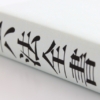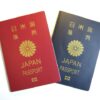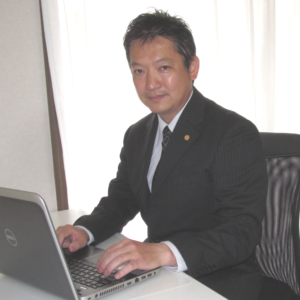Explain the documents required by the immigration office for public health insurance and public pension when applying for permanent residency!

Since July 2019, documents related to public pensions have been added to the required documents for permanent residency applications. While documents related to public health insurance were already required, it seems that the condition of pension enrollment was added due to an increase in cases of “permanent residents" receiving welfare without a pension.
As a result, the required documents for public health insurance and public pensions have become more complicated, so I would like to explain them in detail here.
- 1. Public health insurance and public pension contributions must be paid on time for the past two years
- 1.1. All household members must have paid public health ins投稿一覧urance and public pension contributions on time for the past two years
- 2. Required documents for public health insurance
- 2.1. It is desirable to be enrolled in social insurance for more than two years before the application date
- 2.2. Past enrollment status of public health insurance can be seen in the “Certificate of Insured Person’s Record Inquiry Response"
- 2.3. Submit copies of receipts for National Health Insurance payments
- 2.4. Summary of required documents for public health insurance
- 3. Required documents for public pension
Public health insurance and public pension contributions must be paid on time for the past two years
When applying for permanent residency, the applicant must not only have paid all public health insurance and public pension contributions for the past two years, but they must also have been paid on time.
This seems to be enforced very strictly (with perhaps slight exceptions), and there are cases where even a slight delay has resulted in rejection.
All household members must have paid public health ins投稿一覧urance and public pension contributions on time for the past two years
This is also very important. The payment records for public health insurance and public pension contributions must be submitted for all household members. If even one person in the household has not paid or was late, the application for permanent residency is likely to be rejected.
Required documents for public health insurance
The necessary documents for the payment of public health insurance are a copy of the insurance card, a “Certificate of Insured Person’s Record Inquiry Response", and a copy of the National Health Insurance payment slips and receipts.
The documents vary depending on the insurance status, so some people may only need to submit a copy of their insurance card, while others may need to submit all three. This is the tricky part.
Moreover, this can vary for each household member.
It is desirable to be enrolled in social insurance for more than two years before the application date
Usually, if you are an employee, you will be enrolled in the social insurance of the company you work for. If you can submit a copy of your social insurance card that you have been enrolled in for more than two years before the application date, there will be no problem regarding public health insurance.
However, in this case, copies of the insurance cards for all household members are required. As long as all household members have social insurance cards and have been enrolled for more than two years, it will be fine.
If any household member does not have an insurance card that has been in effect for more than two years from the date of enrollment, a copy of the insurance card alone cannot prove the payment of public health insurance, so additional documents must be submitted for that person. This means that the person either had a period when they were enrolled in National Health Insurance or was enrolled in social insurance from another company.
Past enrollment status of public health insurance can be seen in the “Certificate of Insured Person’s Record Inquiry Response"
To find out which public health insurance you were enrolled in in the past (or should have been enrolled in), you need to obtain a document called the “Certificate of Insured Person’s Record Inquiry Response" from the Japan Pension Service. This is a document for querying pension records, but since health insurance and pension are usually paired, this will show the periods you were enrolled in social insurance and the periods you were enrolled in National Health Insurance.
If the column “①Name of your employer or mutual aid association, etc." in this table contains a company name, it means you were enrolled in social insurance during that period, and you can consider that you were properly paying public health insurance fees during that period. However, if there is a period labeled “National Pension" within two years of the application date, additional documents will be required.
Submit copies of receipts for National Health Insurance payments
For periods within the past two years when you were not enrolled in social insurance, you will have been enrolled in National Health Insurance. For these periods, you need to submit copies of the National Health Insurance payment slips and receipts. These documents have stamps with dates from financial institutions or convenience stores showing the payment date, which confirms that you paid on time.
Summary of required documents for public health insurance
- For those who have been entirely in social insurance for the past two years: Copy of the insurance card
- For those who have been entirely in National Health Insurance for the past two years: “Certificate of Insured Person’s Record Inquiry Response", and copies of National Health Insurance payment slips and receipts (It is also desirable to submit a copy of the current insurance card, so in the end, you need to submit everything.)
- For those who have been in both social insurance and National Health Insurance in the past two years, or have changed companies: Copy of the insurance card, “Certificate of Insured Person’s Record Inquiry Response", and copies of National Health Insurance payment slips and receipts
Required documents for public pension
Public pension payment records can be submitted as either a document printed from “Nenkin Net" or a document obtained from the Japan Pension Service office.
For documents that can be printed from “Nenkin Net", please see the link below.
Documents that can be obtained from the pension office
The documents that can be obtained from the pension office are the aforementioned “Certificate of Insured Person’s Record Inquiry Response", “Insured Person’s Record Inquiry (Payment I)", and “Insured Person’s Record Inquiry (Payment II)", a total of three types.
“Certificate of Insured Person’s Record Inquiry Response" shows the types of pensions for each period. It records in chronological order when and which pension you were enrolled in. If this document shows that you were enrolled in Employees’ Pension Insurance for the past two years, this document alone will suffice for pension payments.
If the “Certificate of Insured Person’s Record Inquiry Response" indicates that you were enrolled in National Pension within the past two years, you will need the “Insured Person’s Record Inquiry (Payment I)" and “Insured Person’s Record Inquiry (Payment II)" documents. Personally, I think just (Payment I) would be enough, but immigration requires both.
“Insured Person’s Record Inquiry (Payment I)" includes the payment dates for pensions. You need to look at the date labeled “Collection Date", but it is difficult to determine just from this whether the payment was late or not, so when you receive this document, it is a good idea to ask the pension office staff to “check if there have been any late payments in the past two years".
“Insured Person’s Record Inquiry (Payment II)" lists the status for each month. The statuses are marked with symbols, which may be confusing, but here are some examples.
“/": Not enrolled in a pension
“A": Type 1 insured person
“+": Type 3 insured person
“*": Unpaid (This also applies to months you will pay in the future.)
Summary of required documents for public pension
- For everyone: Documents that can be printed from “Nenkin Net" (If you can provide this, it will suffice.)
- If you were entirely in Employees’ Pension Insurance for the past two years: “Certificate of Insured Person’s Record Inquiry Response" (This is sufficient even if you changed jobs.)
- If you were enrolled in both Employees’ Pension Insurance and National Pension in the past two years: “Certificate of Insured Person’s Record Inquiry Response", “Insured Person’s Record Inquiry (Payment I)", and “Insured Person’s Record Inquiry (Payment II)"
Whether it’s for insurance or pension, you need to submit documents for everyone, not just the person applying for permanent residency, so the required documents are very numerous and complex.












